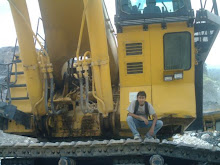
University of Texas professor Constantine Caramanis and colleagues at the Massachusetts Institute of Technology (MIT) are working on a air traffic decision-making system that rapidly adapts its flight recommendations without human input based on thousands of changing variables. The computer model Caramanis, lead researcher Cynthia Barnhart, and other colleagues from MIT are developing will monitor weather conditions as well as current airplane locations and probable routes.
"There is currently no unified decision-making framework for air traffic flow optimization," said Dr. Caramanis. "The complicated nature of the process, and the need to make quick adjustments when changes occur, will best be addressed with a mathematical model that combines theories and calculations from probability, statistics, optimization modeling, economics and game theory."
The Federal Aviation Administration (FAA) provides each airline with a set limit of planes that can take off and land during any given timeframe. These slot decisions are based on estimates of what will optimize air traffic flow, taking into consideration imperfect weather predictions, the changing mix of flights airlines wants to move, and other variables for the thousands of flights that crisscross U.S. skies daily. The airlines then choose the flights.
While developing the air traffic optimization model, the researchers will also consider new ways to lessen delays and flight cancellations. For example, they will consider the possibility of allowing airlines to barter for slots when one airline can't get a flight off the ground and others could do so.
"The idea is to have an overarching optimization model that allows balance and flexibility to the decisions being made so that we can successfully exploit whatever slack in the system we can," Caramanis said. "Our model will have autonomous re-configurability which is the ability to adapt to new information on its own."Oleh:sciencedaily




0 komentar:
Posting Komentar